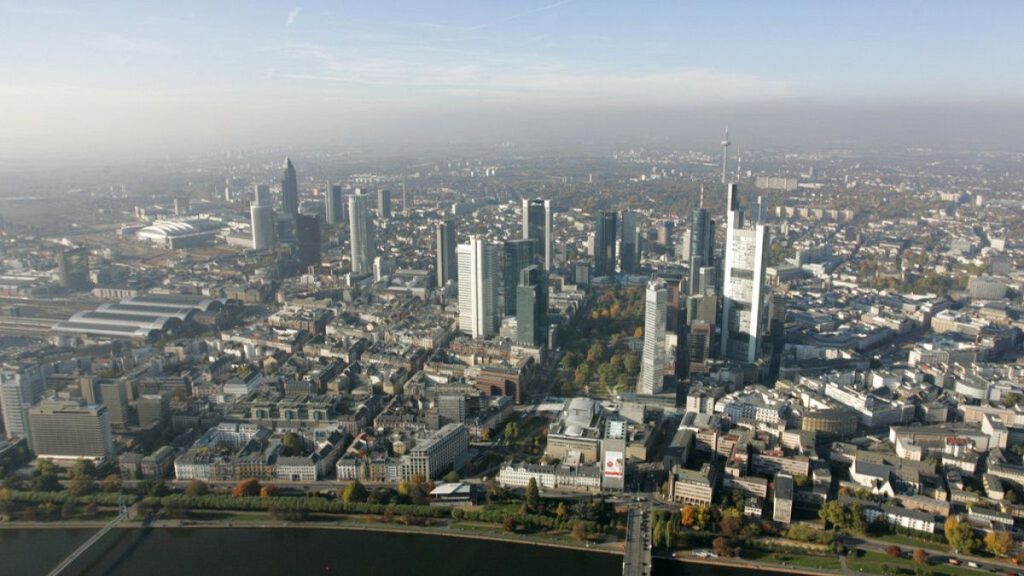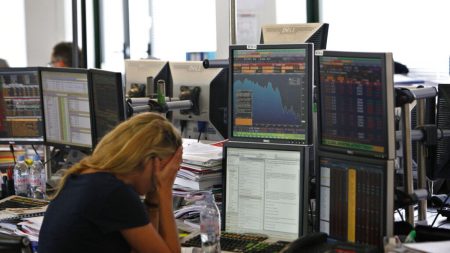The eurozone economy stalled in the final quarter of 2024, with zero growth recorded, marking the weakest performance since the end of 2023 and falling short of the anticipated 0.1% expansion. This stagnation underscores mounting concerns about the region’s persistent economic fragility, particularly given the worse-than-expected contractions in Germany and France, the bloc’s two largest economies. Germany’s GDP shrank by 0.2%, exceeding the predicted 0.1% decline, while France’s economy contracted by 0.1%, missing forecasts of stagnation. Italy also experienced a second consecutive quarter of zero growth, defying projections of a modest 0.1% increase. This overall economic weakness reinforces expectations of further interest rate cuts by the European Central Bank (ECB). In contrast, the broader European Union (EU) saw marginal growth of 0.1% quarter-on-quarter. Year-on-year, both the euro area and the EU experienced slight improvements in seasonally adjusted GDP, reaching 0.9% and 1.1% respectively, compared to 0.9% and 1.0% in the preceding quarter.
While the core eurozone economies faltered, some peripheral nations demonstrated resilience and outperformance. Portugal led the pack with a robust 1.5% growth, followed by Lithuania at 0.9% and Spain at 0.8%. This growth disparity highlights the uneven economic landscape within the EU, with the periphery driving expansion while the core struggles with structural and cyclical headwinds, as well as political uncertainties. The stark contrast between the struggling core and the relatively robust periphery raises questions about the overall health and sustainability of the eurozone’s economic recovery. The reliance on peripheral economies for growth underscores the need for structural reforms and fiscal measures in the larger economies to address their underlying weaknesses and ensure more balanced growth across the region.
The disappointing GDP figures further solidify expectations of an imminent interest rate cut by the ECB. Markets have fully priced in a 25-basis-point reduction, bringing the key interest rate down to 2.75%. Furthermore, market analysts predict four rate cuts by the end of 2025, indicating a sustained easing cycle as the ECB grapples with sluggish growth and strives to steer inflation towards its 2% target. The pressure on the ECB to continue cutting rates stems from the visibly struggling economy and the need to stimulate activity. However, ECB President Christine Lagarde is expected to emphasize the limitations of monetary policy alone and advocate for complementary fiscal measures and structural reforms to enhance competitiveness and bolster long-term economic prospects.
The anticipated ECB rate cut underscores a widening policy divergence between the European Central Bank and the US Federal Reserve. The Fed, following its Wednesday meeting, maintained its interest rates in the 4.25% to 4.50% range, with Chair Jerome Powell indicating no urgency for further cuts, citing the resilience of the US economy. This divergence reflects the contrasting economic realities on either side of the Atlantic. The eurozone faces fragility, stagnation, and rising recession risks, as evidenced by the weak Q4 GDP data and continued contraction in the manufacturing sector. Conversely, the US economy remains robust, fueled by consumer spending, a tight labor market, and investments in artificial intelligence.
Market reactions to the eurozone’s economic data and the anticipated ECB rate cut were relatively muted. The euro held steady around $1.04 ahead of the ECB meeting. Sovereign bond yields across the eurozone fell, reflecting increased demand for safe-haven assets amid economic uncertainty. Germany’s 10-year Bund yield dropped to 2.52%, while France’s and Italy’s equivalent yields declined to 3.26% and 3.60% respectively. Eurozone equities showed a limited positive reaction, with the Euro STOXX 50 index rising 0.5%. ASML Holding, a Dutch semiconductor company, saw significant gains following strong earnings and an optimistic outlook. Germany’s DAX index reached a new record high, despite a decline in Deutsche Bank shares due to concerns about stagnant revenue and rising costs. Spain’s IBEX 35 outperformed, driven by gains in real estate and banking stocks.
The stagnant eurozone economy, driven by the contractions in Germany and France, highlights the challenges facing the region. The weak GDP data underscores the need for the ECB to continue its monetary easing cycle, further widening the policy gap with the US Federal Reserve. While peripheral economies offer some positive signs, the overall picture remains one of fragility and uncertainty, emphasizing the importance of structural reforms and fiscal measures to support long-term economic health and resilience. Market reactions have been relatively subdued, likely awaiting the outcome of the ECB meeting and further clarity on the economic outlook. The contrast between the eurozone’s stagnation and the US’s robustness underscores the divergent economic trajectories and the need for tailored policy responses in each region.














